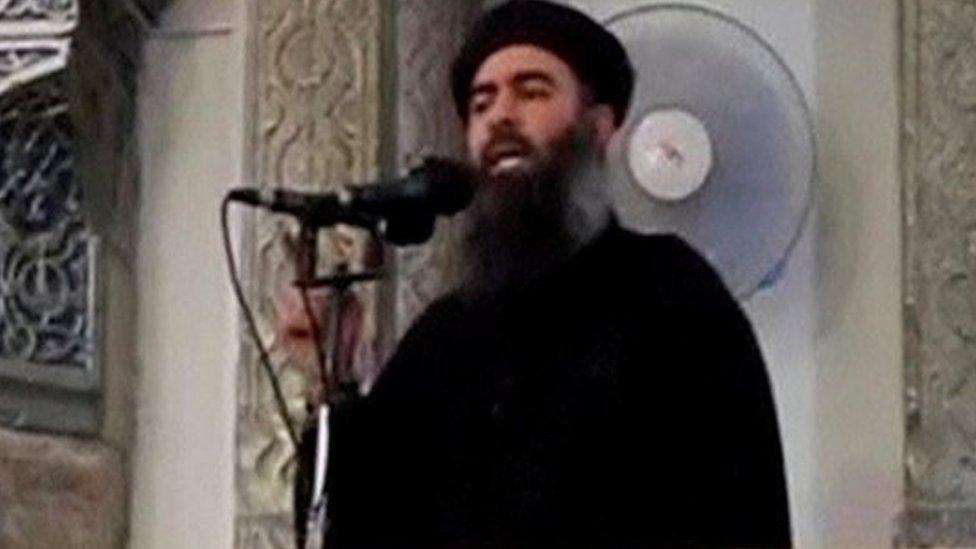Abu Bakr al-Baghdadi: What we know about US raid in Syria
- Published
Mr Trump called Abu Bakr al-Baghdadi a "brutal killer"
The elusive leader of the Islamic State group (IS), Abu Bakr al-Baghdadi, killed himself during a raid early on 27 October by US special forces in Syria.
Here's what we know about the operation that targeted Baghdadi, which was announced by US President Donald Trump.
How was Baghdadi located?
According the unconfirmed US media reports, the location of Baghdadi's hideout in a small compound outside the village of Barisha in Idlib province, about four miles (6km) south of the Turkish border, emerged from details given by an informant or informants over the past few months.
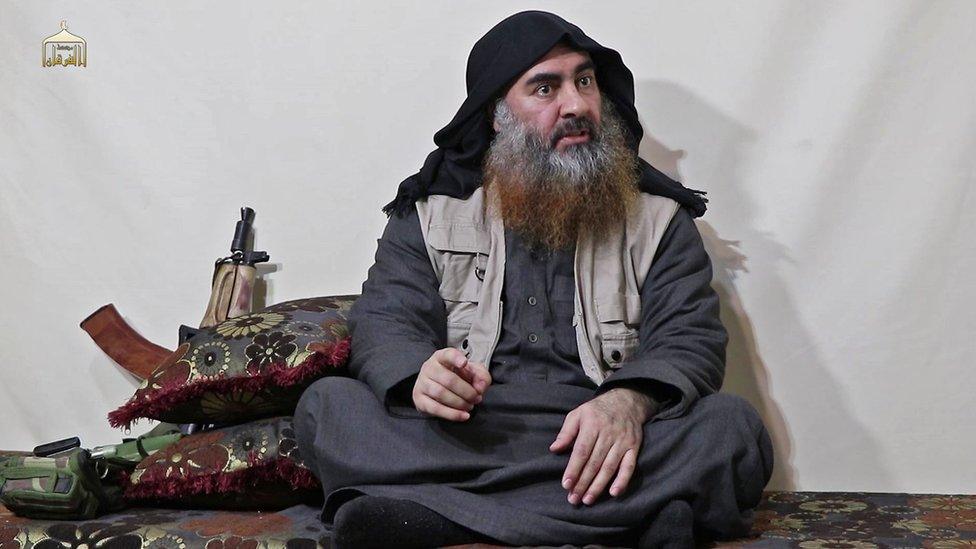
The US had offered a $25m reward for information about Abu Bakr al-Baghdadi
The New York Times quoted US officials as saying one of Baghdadi's wives and a courier had been arrested over the summer, external. The Washington Post quoted an official as saying a disaffected IS militant who became an informant for the Kurds had provided information, external.
Meanwhile, a senior commander of the US-allied and Kurdish-led Syrian Democratic Forces, Mazloum Abdi, said they had been collating information for months, and sent out a tweet praising all who had taken part in "this great mission".
The location came as something of a surprise because Idlib is dominated by jihadist rivals to the IS group, although hundreds of IS fighters are believed to be based there.
Mr Trump said he gave the go-ahead for a raid after being informed on 24 October that Baghdadi was probably at the site. He joined staff in the White House situation room at about 17:00 Washington time (21:00 GMT) on 26 October to watch the mission.
The raid was a "US-only operation", the Pentagon later said.
How did the mission unfold?
Several US allies or powers in the region were given advance notification of the raid, including Turkey, Iraq, Kurdish forces in north-eastern Syria, and Russia, which controls airspace over Idlib.
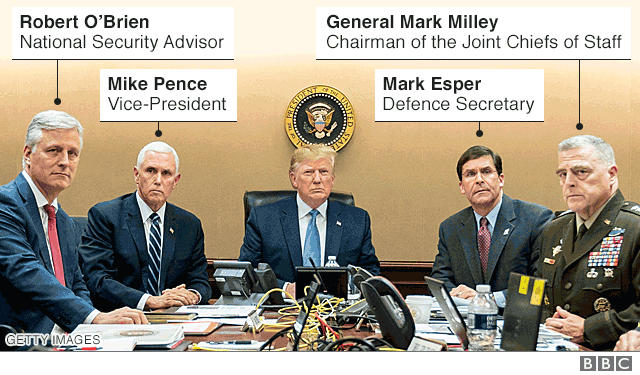
The exact make-up of the attacking force was not released, but US officials quoted by US media said some members of the elite special operations Delta Force - who are typically involved in such operations - took part. Fewer than 100 US ground troops are thought to have carried out the raid.
They used several types of aircraft, including eight helicopters, and took off from Iraq for a journey of about one hour and 10 minutes to the target site.
The troops arrived at about 01:00 local time to a barrage of shots from the ground, reports said. The US force returned fire. A resident of Barisha said the US helicopters fired missiles at two houses, flattening one.
On landing, the US force called on Baghdadi to come out and surrender. Two adults and 11 children emerged, US officials said, but Baghdadi remained inside, apparently dropping through a hatch into a tunnel network.
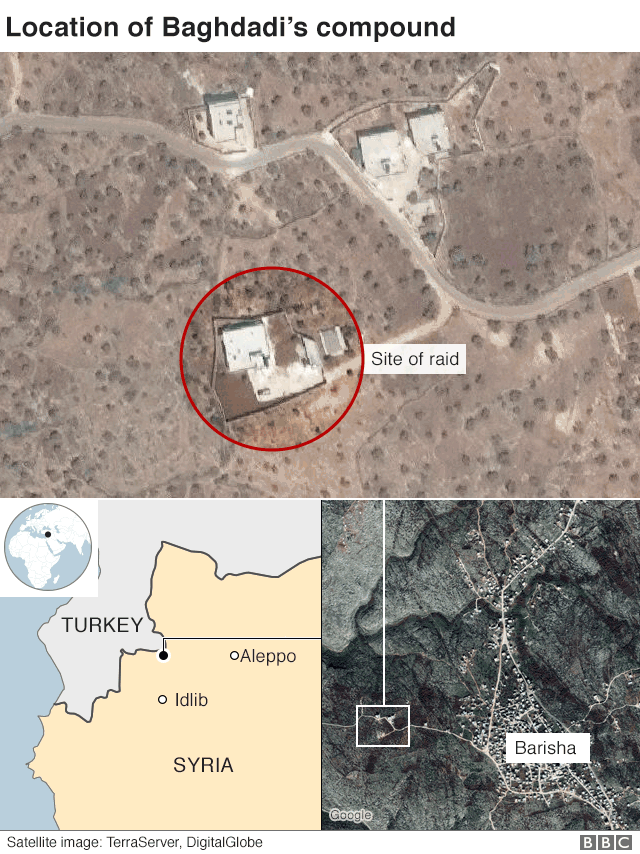

The US force blew holes in the walls to avoid any booby traps in doors. The retreating Baghdadi then detonated his suicide vest and died in the tunnel, along with two children - not three as previously reported - he had taken with him.
The president said Baghdadi died "after running into a dead-end tunnel, whimpering and crying and screaming".
Asked about Mr Trump's account of events, Mark Esper, the US defence secretary, said he knew nothing of any "whimpering" but that the president may have gotten that detail from commanders on the ground.
The grainy footage shows troops closing in on the compound - and later an explosion destroying it
About a dozen children were removed from the site, Mr Trump said, but were left in the care of others in the area. The US force departed in its helicopters at about 03:30.
Photos and videos of the aftermath of the raid showed the rubble of a destroyed building, as well as a burnt-out minibus riddled with bullet holes.
Who were the other casualties?
The head of US Central Command, Gen Kenneth McKenzie, said four women - who were wearing suicide vests - and one man were killed at the compound. Two of them were believed to be wives of Baghdadi.
He said an unknown number of fighters also died after opening fire on US helicopters.
Two men were captured during the raid, and they are now in US custody.
President Trump said that no US troops were injured but Mr Esper said two had received light wounds and were already back on duty.
One of the US military dogs that tracked Baghdadi into the tunnels was injured but left the site of the raid with the troops.
How is the US sure Baghdadi is dead?
Reports suggested US troops visually recognised Baghdadi and confirmed his death at 19:15 Washington time on Saturday, when the commander on the ground used the code "jackpot".
Mr Trump said test results carried out on the remains "gave certain, immediate and totally positive identification" that it was Baghdadi.
The tests were carried out on site by technicians who accompanied the special forces personnel and had samples of Baghdadi's DNA with them, reports said. The technicians also brought "substantial pieces" of the body back with them on the helicopters.
Senior SDF commander Polat Can said their spy had stolen Baghdadi's underwear which was DNA tested and used to prove the identity before his death. Gen McKenzie said DNA samples had been on file since Baghdadi's detention in an Iraqi prison in 2004.
Gen McKenzie also said Baghdadi's remains were flown back to a staging base for identification and were then buried at sea within 24 hours of his death "in accordance with the laws of armed conflict".
This apparently followed the same protocol applied to the remains of al-Qaeda leader Osama Bin Laden, who was killed in a US raid in Pakistan in 2011.
Why was Baghdadi in Idlib?
Barisha is hundreds of kilometres from the remote desert region on the Syria-Iraq border where Baghdadi was believed to be hiding.
Mr Trump said Baghdadi was in Idlib because he was looking to rebuild IS after Kurdish-led forces, backed by the US, had captured the group's last pocket of territory - around the eastern Syria village of Baghuz - in March.
"That's why he went to this area," the president added. "That was the place that makes most sense if you're looking to rebuild."
Mr Trump said valuable intelligence about Baghdadi's future plans were found during the raid and that the US would pursue whomever assumed the leadership of IS. "We know the successors. And we've already got them in our sights," he said.
- Published27 October 2019
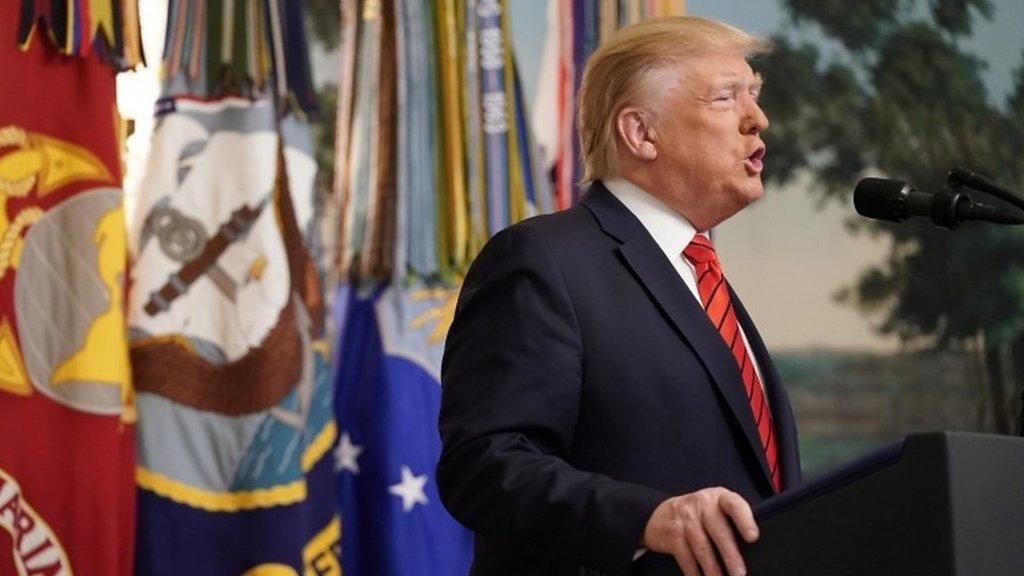
- Published27 March 2019
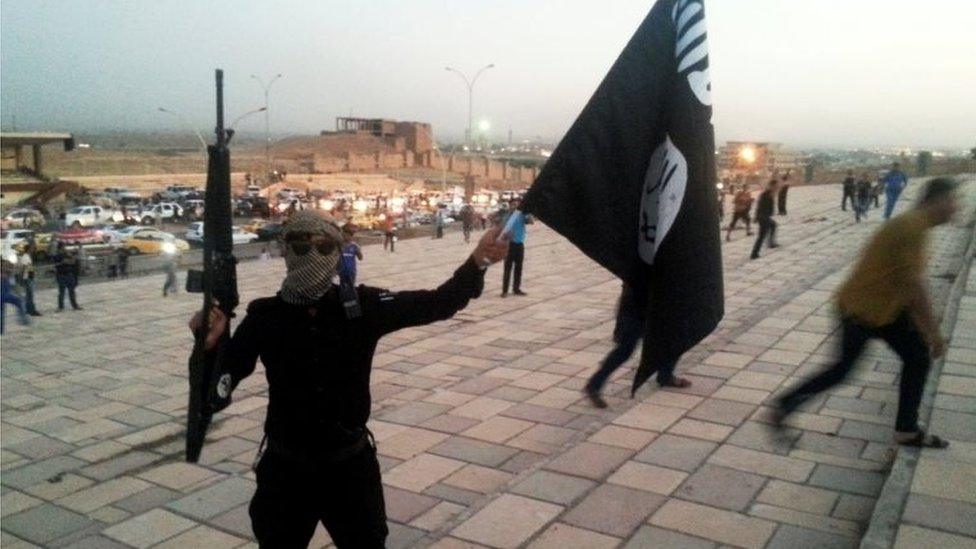
- Published23 March 2019
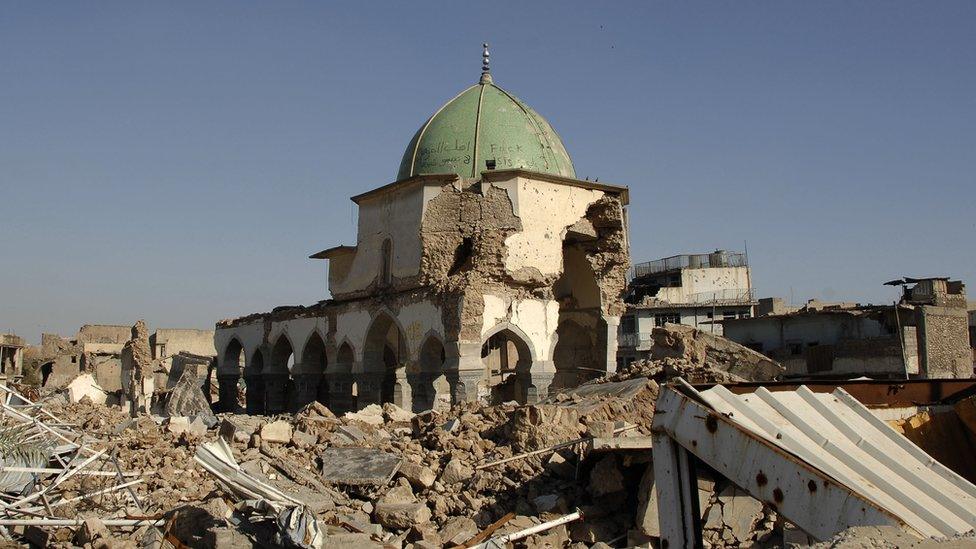
- Published8 March 2016
